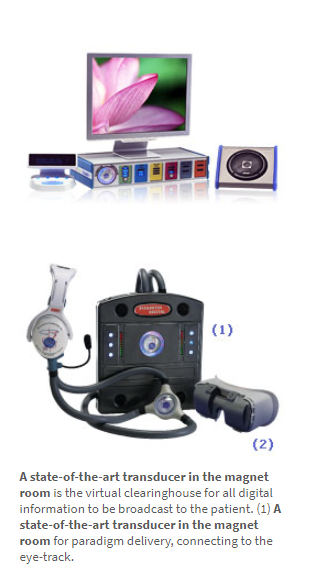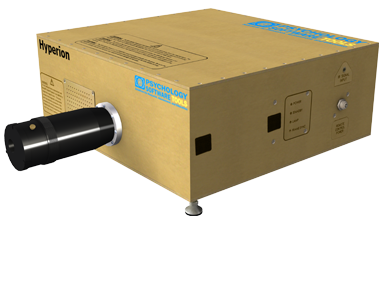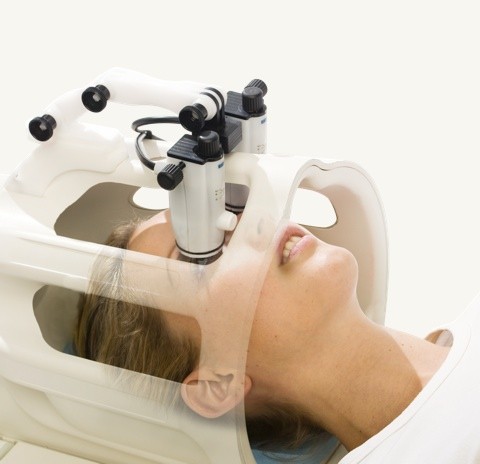Display/ projection equipment for visual fMRI stimuli
Columbia University MRI Center at the Neurological Institute
VisuaStim System
CUIMC uses the Resonance Technology Inc VisuaStim system for both audio and visual stimulation.

There is also a projector and a rear projection screen with mirror.
New York State Psychiatric Institute
NYSPI users can access details on available hardware at the NYSPI MRI site.
Contact the MR Program Coordinator for details.
Zuckerman Mind Brain Behavior Institute
Current systems include a Psychology Software Tools Inc (PST) projector, NordicNeuro Lab goggles, and a display monitor.
The ZMBBI equipment description includes specifications about the MR systems, available coils, RF shop and instrumentation shop resources, spaces, and staff available to MR Center users.

PST Projector
Visual presentation uses the Hyperion MRI Digital Projection System. The system has a resolution of 1920 x 1080 (1080p) and synchronized image frame rate with continuous monitoring. The system uses Digital Light Processing® (DLP) technology that allows you to project clear images. The Hyperion MRI Digital Projection System has been validated for use in 1.5T, 3T, and 7T MRI environments.
MR-safe glasses frames and a set of lenses is available for participants who need corrected vision to see the visual stimuli. There is a set at each Siemens scanner. There is also guide for how to use these glasses.

Nordic Neuro Lab (NNL) Camera and Goggles
The VisualSystem allows the user to present graphics or text to the patient.
The VisualSystem has been designed to fit most head coils. The adjustable arm allows users to set the preferred angle of view. Diopter correction is built in, to allow fine-tuning of pupil distance.
The VisualSystem features is connected via a fiber-optic cable entering the magnet room through the waveguide.
Studies indicate that the presentation of visual stimuli in fMRI experiments is more reliable with direct input through video goggles than with the use of conventional projection systems. Because the VisualSystem is placed close to the eyes, individuals are less likely to experience discomfort related to the confined space of the MRI scanner
School of Engineering and Applied Sciences (SEAS)
TBD
Nathan Kline Institute
TBD